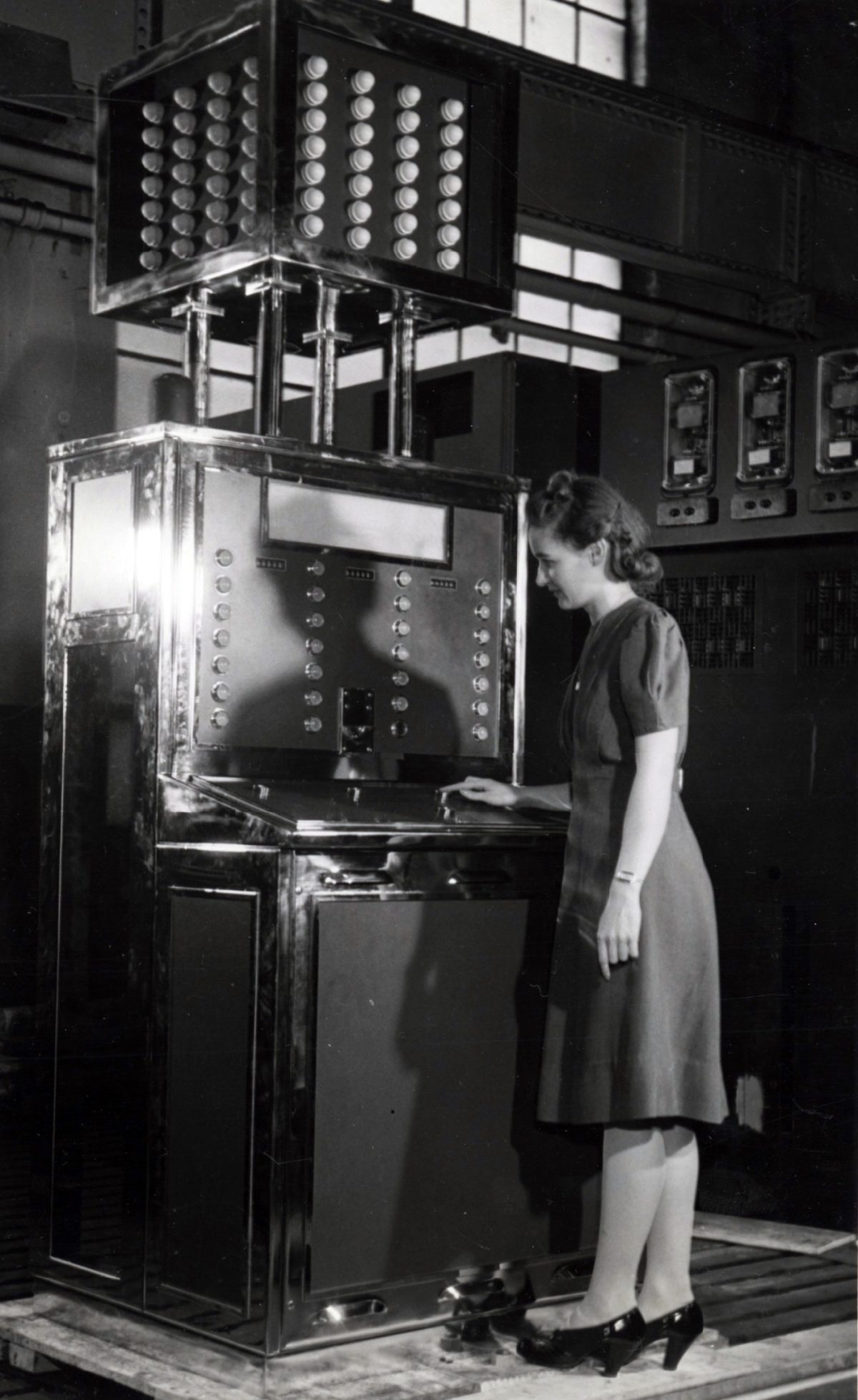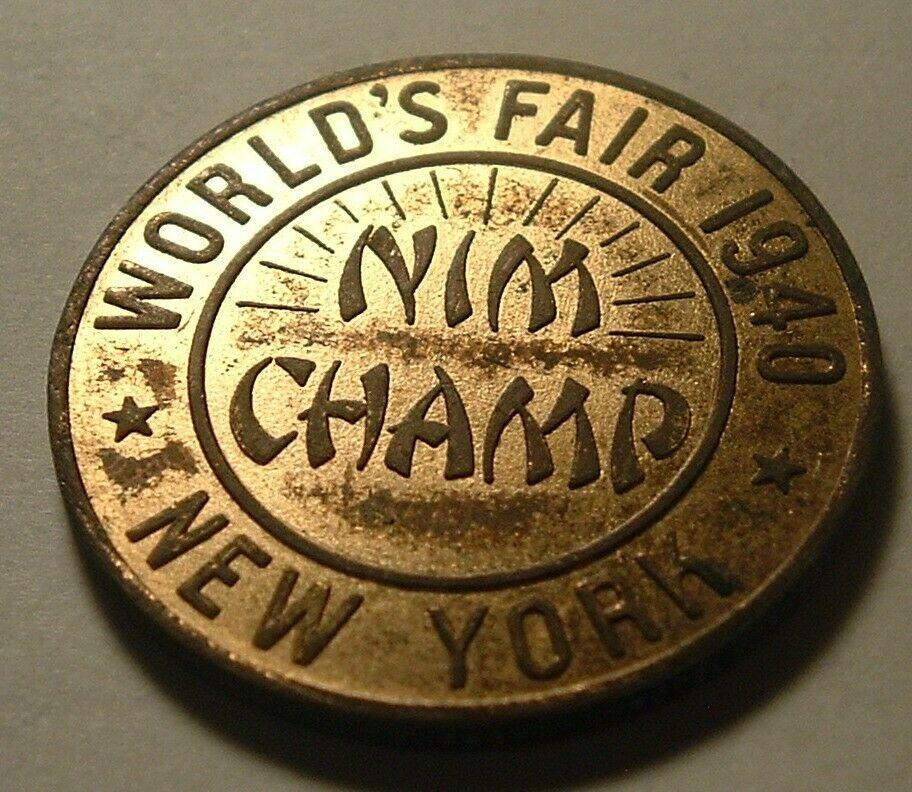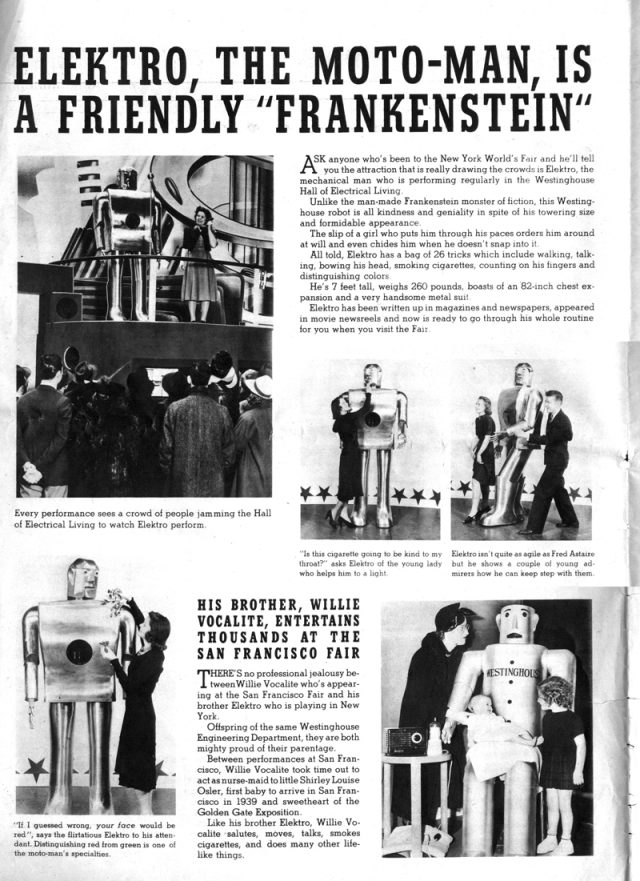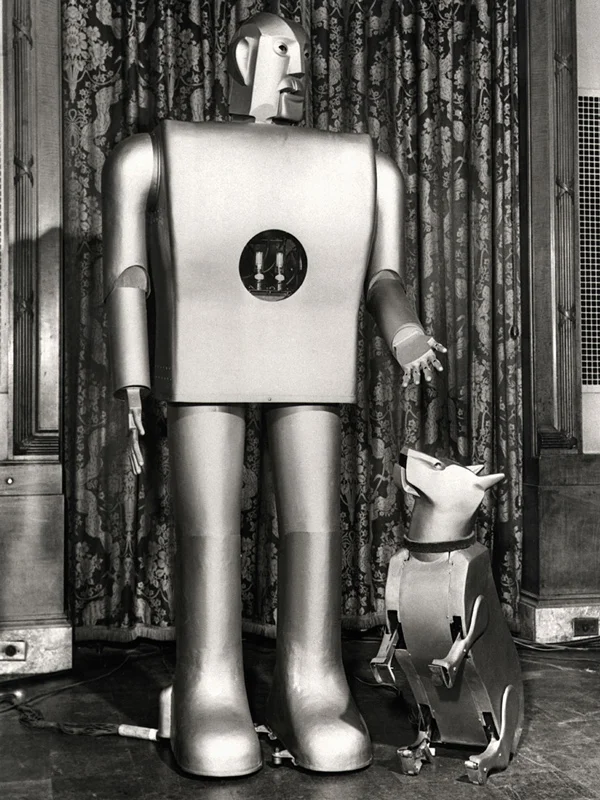created 2025-05-02, & modified, =this.modified
tags:y2025retrocomputersrobots
From the New York World’s Fair.
Nimatron
It was a “non-programmable digital computer composed of electro-mechanical relays which could respond to players choices in the game in a dozen of different patterns.”
Devised by the company’s in-house physicist Edward Condon (March 2, 1902 – March 26, 1974), the Nimatron was based on an ancient numbers game called ‘Nim’.

The winners who could best the machine received a token.

Elektro
“Ladies and gentlemen, I’ll be very glad to tell my story. I am a smart fellow as I have a very fine brain of 48 electrical relays.”
From Westinghouse.

In 1941 a second hole was added to Elektro’s upper lip, but this one was for a more innocuous party trick. Elektro liked to challenge audience members to balloon-blowing competitions, seeing who could burst the balloon first. Equipped with an air hose and compressor, the robot almost always won.
Elektro’s dog, Sparko, was added to the World’s Fair show in 1940. Sparko could move forward and back, sit down, turn its head, wag its tail, and bark. Don Lee Hadley designed Sparko based on his own Scottish terrier, Bonnie. Westinghouse commissioned three dogs (the prototype plus a companion each for Elektro and another Westinghouse robot, Willie Vocalite), but none are known to survive today.
Enthusiastic reporters exaggerated Herbert’s skills, claiming it could manage an entire home by remote control. Wensley spent a great deal of effort correcting the record about Televox’s actual abilities. Nevertheless, the publicity spurred further research. The U.S. military, for instance, investigated using Televox to fire guns remotely.
